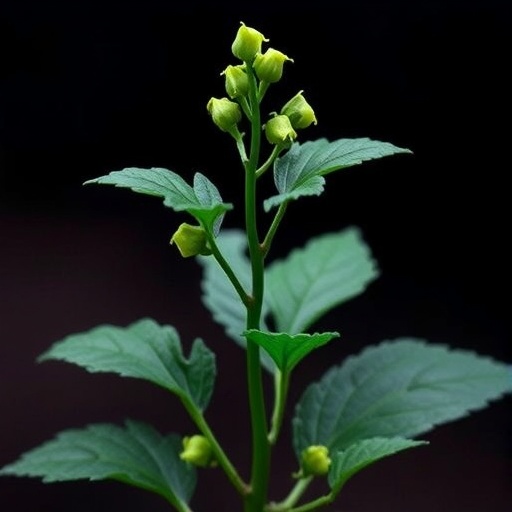Unraveling the Genetic Underpinnings of Ashwagandha Cultivars: A Deep Dive into Correlation, Path Coefficient, and Genetic Diversity Analysis
Recent research into the world of herbal medicine has yielded promising insights into the genetic diversity of Ashwagandha, scientifically known as Withania somnifera. The study, conducted by Kumari and colleagues, delves into several genetic aspects of this revered plant, particularly focusing on the correlation, path coefficient, and the outcomes of genetic diversity analysis performed on cultivars that have been subjected to ethyl methanesulfonate (EMS) induction. The investigation indicates that the intricacies of Ashwagandha cultivation and breeding are more complex than previously understood, revealing layers of genetic variability that could lead to better agricultural practices and enhanced medicinal properties.
The genetic analysis presented in the study highlights the significance of EMS as a mutagen in inducing genetic variability. EMS treatment has been utilized in plant breeding to develop new cultivars that may exhibit improved traits, such as increased yield, heightened resistance to diseases, or improved stress tolerance. This mutagenic approach underpins the research as scientists explore how various genetic markers correlate with desirable phenotypic traits in Ashwagandha. This novel insight not only provides a deeper understanding of the plant’s genetic structure but also suggests pathways for further research in agronomy and genetics.
When it comes to correlation analysis, the research examines the relationship between specific traits of the Ashwagandha cultivars. Understanding these correlations is essential for plant breeders aiming to select for multiple traits simultaneously, optimizing both the breeding process and the resulting cultivars. These correlations can reveal how certain characteristics, such as root biomass or alkaloid content, may influence one another, thereby supporting more informed selection criteria in breeding programs.
Moreover, the path coefficient analysis presents an advanced statistical approach to assess the direct and indirect effects of various traits on the overall fitness of the cultivars. By breaking down these interactions, the study sheds light on which traits have the most significant impact on Ashwagandha cultivation success and can be prioritized in breeding strategies. This quantitative assessment is crucial for developing cultivars that not only perform well agronomically but also meet market demands for quality and efficacy in herbal practices.
The genetic diversity analysis revealed that treated cultivars exhibit considerable variation, opening up new avenues for breeding efforts. The presence of genetic diversity in cultivated plants is vital as it imparts resilience against pests and environmental changes while also allowing for the adaptation of varieties to specific climatic conditions. Such findings are timely as global agricultural communities grapple with the pressing need for crops that can withstand climate change and ensure food security.
In an era where traditional medicine is regaining popularity, this research serves as a bridge between age-old practices and modern scientific techniques. Ashwagandha, often dubbed as a miracle herb, has been utilized in holistic healing for centuries. The insights provided by this research can ensure that these traditional uses are backed by robust scientific evidence, potentially expanding the application of Ashwagandha in contemporary medicine.
The findings from Kumari et al. offer not just an examination of the genetic aspects of Ashwagandha but also present a compelling case for further exploration of mutagen-induced variations in other medicinal plants. Furthermore, understanding the genetic foundations of phenotypic traits across different species can enhance our overall approach toward developing resilient, high-yielding agricultural products. The implications of such research extend beyond the realm of herbal medicine; they hold the potential to influence broader agricultural practices and food production systems.
As this research finds its place within the larger framework of plant genetics, it raises important questions regarding the future evolution of Ashwagandha cultivars. Could the incorporation of genetic insights lead to the development of future super-cultivars with optimized growth and therapeutic profiles? With the continued interest in the therapeutic benefits of medicinal plants, the research conducted by Kumari and colleagues sets a precedent for future studies aimed at understanding and manipulating plant genetics for sustainable agricultural practices.
In summary, the correlation, path coefficient, and genetic diversity analysis of EMS-induced Ashwagandha cultivars provide essential insights into plant genetics that can enhance breeding strategies. Given the rise of interest in herbal medicines worldwide, research like this will undoubtedly inform agricultural practices and ensure that traditional herbs can meet future demands for efficacy and resilience. The multifaceted approach taken by the researchers heralds a new era of informed decisions in the cultivation and enhancement of medicinal plants.
Strengthening the link between research and practical application, this study serves as a valuable resource for plant breeders, geneticists, and herbal medicine practitioners alike. As we move forward, the intersection of traditional knowledge and scientific validation will cultivate a richer understanding of plants in our ecosystem, ensuring that they continue to flourish, both in the soil and in modern therapies.
Subject of Research: Genetic Diversity Analysis in Ashwagandha Cultivars
Article Title: Correlation, Path Coefficient and Genetic Diversity Analysis in EMS Induced Cultivars of Ashwagandha [Withania somnifera (L.) Dunal].
Article References: Kumari, P., Ram, T.C., Aftab, N. et al. Correlation, Path Coefficient and Genetic Diversity Analysis in EMS Induced Cultivars of Ashwagandha [Withania somnifera (L.) Dunal]. Biochem Genet (2025). https://doi.org/10.1007/s10528-025-11205-0
Image Credits: AI Generated
DOI: 10.1007/s10528-025-11205-0
Keywords: Ashwagandha, Withania somnifera, genetic diversity, EMS induction, path coefficient analysis, herbal medicine, plant breeding.




